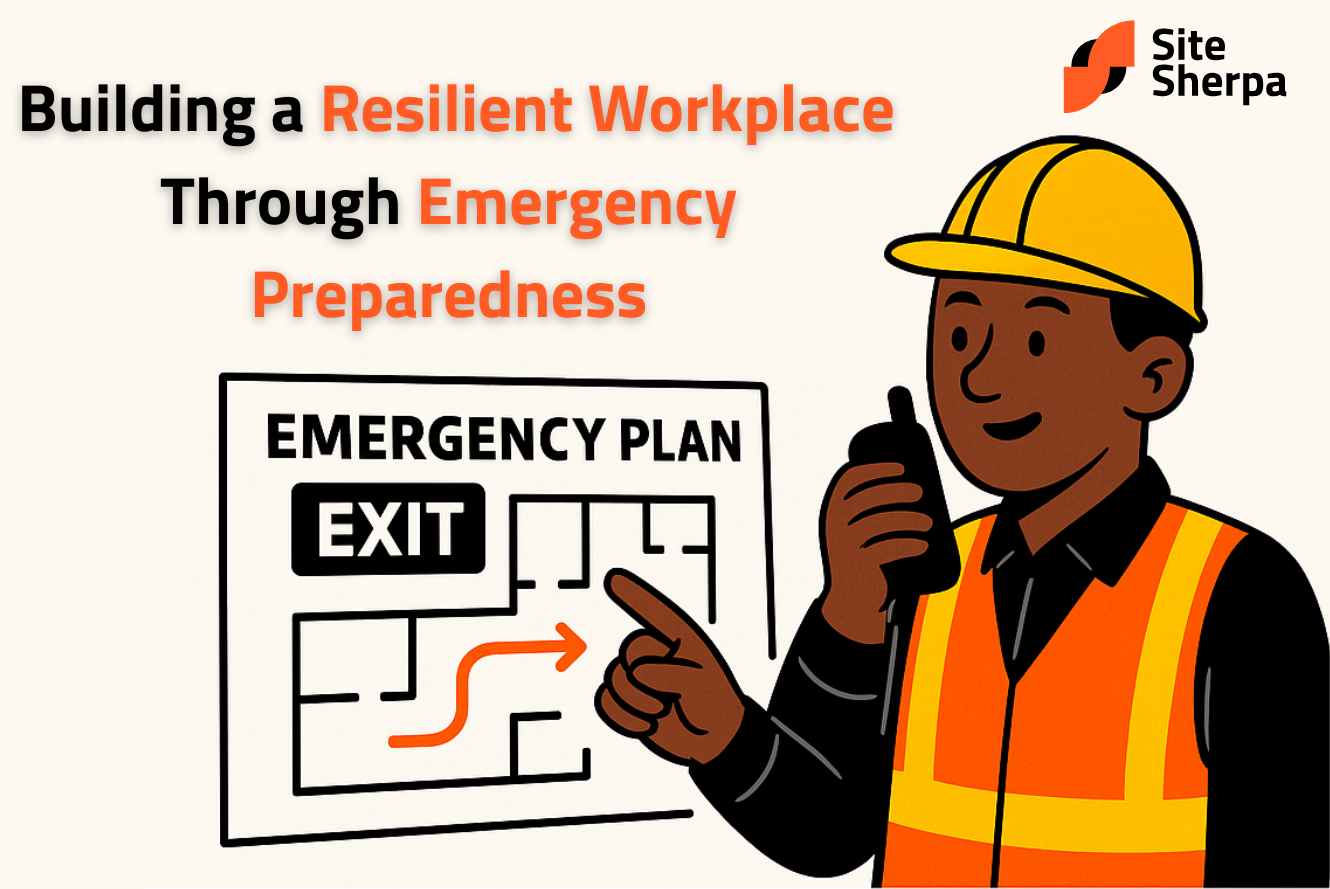Building a Resilient Workplace Through Emergency Preparedness
Preparing Workplaces for Emergencies with Clear Plans and Response Strategies
Emergencies can disrupt operations, endanger employees, and create significant financial and legal challenges. Our Emergency Preparedness Plans provide businesses with structured strategies to manage crises effectively. By integrating risk assessments, hazard communication protocols, and compliance with the Model WHS Act, organizations can mitigate risks, safeguard employees, and maintain business continuity. A well-prepared workplace ensures a swift, coordinated response that minimizes disruptions and enhances overall resilience.
Why is a Tailored Emergency Plan Important?
A strong Emergency Preparedness Plan protects employees and maintains operational stability. SiteSherpa designs customized plans that address industry-specific threats, define evacuation and emergency response protocols, and train employees to act quickly in high-risk situations. Effective hazard communication ensures all personnel understand emergency roles and responsibilities, reducing confusion and improving response time.
- Identifies workplace hazards to reduce risks before an emergency occurs.
- Ensures compliance with the Model WHS Act and industry-specific safety regulations.
- Establishes business continuity strategies to minimize operational downtime.
- Provides employees with structured training to respond efficiently during crises.
Our Approach to Emergency Planning and Risk Management
Emergency preparedness requires a strategic, customized approach that evolves with workplace risks. SiteSherpa develops emergency response plans that include detailed action steps, employee training, and simulation exercises, ensuring businesses are ready for crises. Our tailored solutions focus on long-term risk mitigation, regulatory compliance, and business resilience.
Empowering Employees with Emergency Training and Hazard Communication
A prepared workforce is a safer workforce. To act decisively in a crisis, employees must be well-versed in evacuation procedures, emergency contacts, and response protocols. SiteSherpa’s structured training programs ensure employees are confident in executing emergency actions, reducing workplace injuries and operational delays.
Steps to Implement a Reliable Emergency Preparedness Plan
Organizations should conduct risk assessments to identify workplace-specific threats and vulnerabilities. Emergency response procedures must be developed in alignment with the Model WHS Act, ensuring compliance with safety laws. Clear hazard communication protocols should be in place to provide employees with critical information before, during, and after an emergency. Training programs and emergency drills must be conducted regularly to reinforce response skills. Emergency plans should be reviewed and updated periodically to address growing risks and operational changes. A well-maintained emergency preparedness strategy enhances workplace safety, regulatory compliance, and operational resilience.
A structured plan enables businesses to respond quickly to emergencies, reducing employee risk, ensuring regulatory compliance, and minimizing disruptions to operations.
Clear hazard communication ensures employees understand emergency procedures and risk factors, allowing them to take appropriate action before, during, and after a crisis.
Emergency plans should be reviewed annually or whenever workplace conditions, staffing, or risk levels change to ensure alignment with the Model WHS Act and current safety regulations.
Related Content
Join Our Newsletter
Receive expert insights, safety updates, and the latest updates in our services and apps. Stay ahead of workplace safety, compliance, and operational efficiency delivered straight to your inbox.


.png)
.png)
.png)
.png)
.png)
.png)
.png)
.png)
.png)